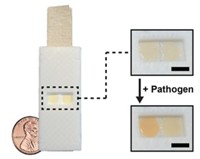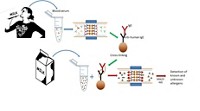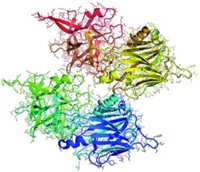Advertisement
Grab your lab coat. Let's get started
Welcome!
Welcome!
Create an account below to get 6 C&EN articles per month, receive newsletters and more - all free.
It seems this is your first time logging in online. Please enter the following information to continue.
As an ACS member you automatically get access to this site. All we need is few more details to create your reading experience.
Not you? Sign in with a different account.
Not you? Sign in with a different account.
ERROR 1
ERROR 1
ERROR 2
ERROR 2
ERROR 2
ERROR 2
ERROR 2
Password and Confirm password must match.
If you have an ACS member number, please enter it here so we can link this account to your membership. (optional)
ERROR 2
ACS values your privacy. By submitting your information, you are gaining access to C&EN and subscribing to our weekly newsletter. We use the information you provide to make your reading experience better, and we will never sell your data to third party members.
Analytical Chemistry
Spotting Deadly Spores
Pathogens: Technique based on mass spectrometry can find anthrax in milk and soil
by Katharine Sanderson
October 11, 2011

A new analytical technique could improve scientists’ ability to detect anthrax spores in environmental samples, such as soil or milk (Anal. Chem., DOI: 10.1021/ac2020992).
When looking for the microbe that causes anthrax, Bacillus anthracis, researchers have to worry about two analytical problems, says François Becher of the French Alternative Energies and Atomic Energy Commission: Their technique must detect tiny quantities because the minimum infectious dose for inhalation can be as little as 1,000 spores; The method must also pick out the correct Bacillus strain. Other Bacillus family members, like B. cereus, are genetically similar to anthrax and can appear to be the more dangerous bacterium.
In the method designed by Becher and his colleagues, the researchers use magnetic beads coated with anthrax-specific antibodies to pull out anthrax spores from a contaminated sample. They then treat the beads with acid to extract the bound spores. Finally, the scientists digest the spores’ proteins with proteases to produce small protein fragments for analysis by a sensitive mass spectrometry technique called multiple reaction monitoring. B. anthracis has a unique protein signature that the researchers can detect.
Becher’s team tested the method on samples of milk and soil spiked with anthrax spores. In a milliliter of milk or 10 mg of soil, the researchers could pick out as little as 7,000 spores, both of which correspond to the minimal infectious dose for ingestion.
The technique could complement current field-based measurements, such as colorimetric assays, Becher says, to verify cases of anthrax poisoning.







Join the conversation
Contact the reporter
Submit a Letter to the Editor for publication
Engage with us on Twitter